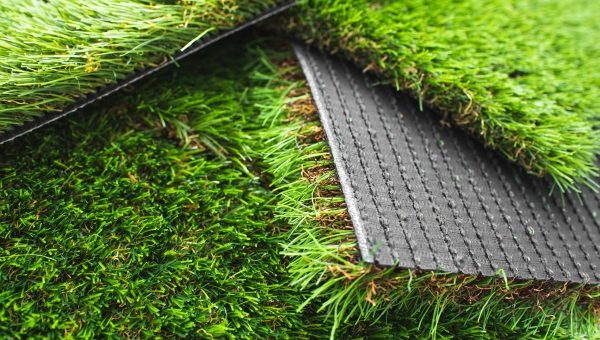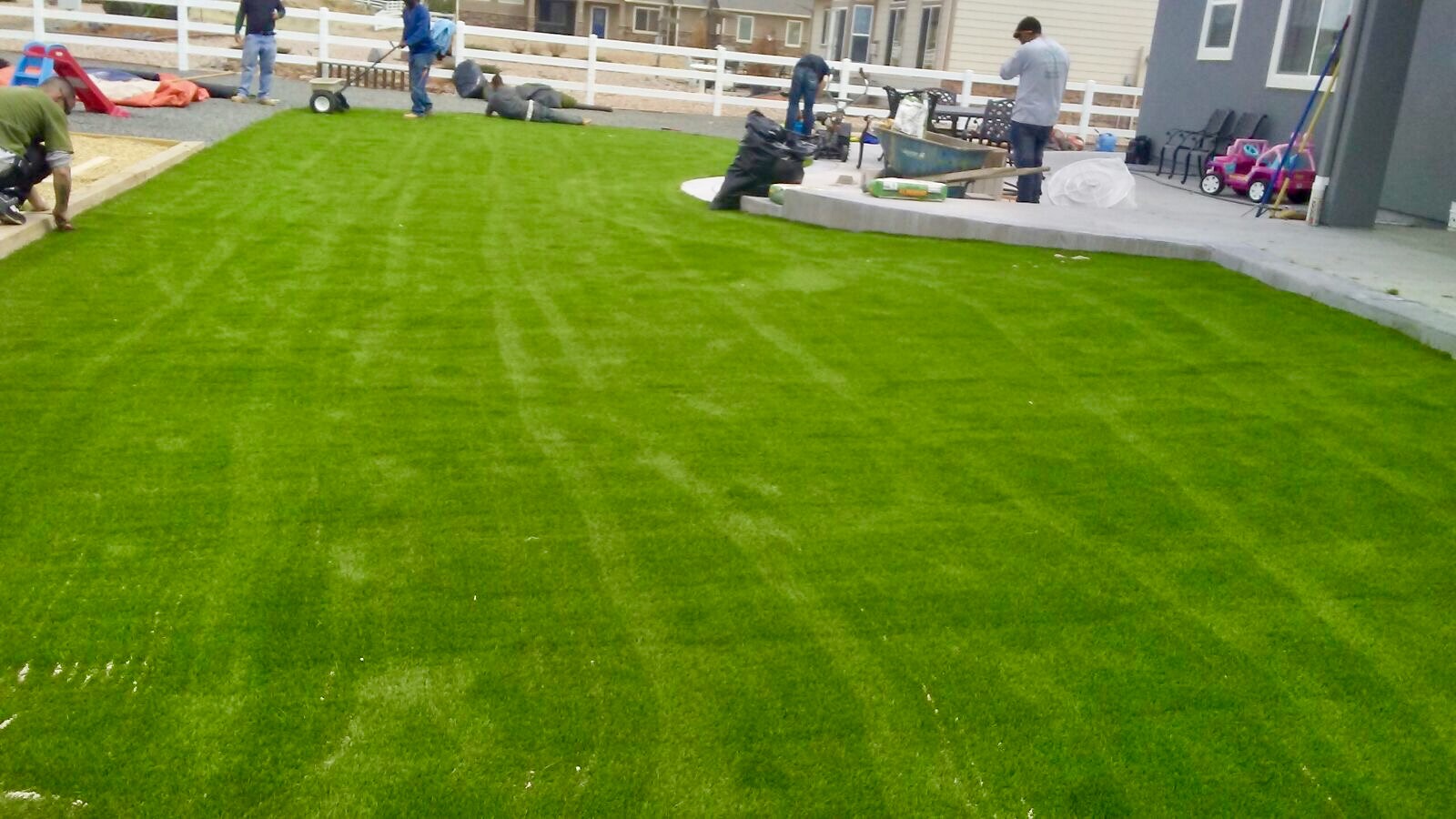Durable Arizona Artificial Turf for Home and Commercial Applications
Durable Arizona Artificial Turf for Home and Commercial Applications
Blog Article
Look Into the Environmental Advantages of Opting for Artificial Grass Solutions
The adoption of synthetic grass remedies presents an engaging chance to address pressing ecological obstacles. By significantly decreasing water use and reducing the application of damaging chemicals, these alternatives not only promote lasting landscape design but additionally protect regional ecosystems. The reduced carbon footprint associated with lowered upkeep activities adds to a much more lasting technique to land management. The implications of these advantages expand beyond plain conservation initiatives, increasing inquiries regarding their long-term effect on environment preservation and total ecological equilibrium. Exploring these dimensions exposes an intricate interplay worth considering.
Water Conservation Benefits
One of the most considerable benefits of synthetic grass is its ability to conserve water. In contrast, fabricated grass does not require watering, considerably lowering the general demand for water sources.
By removing the demand for regular watering, man-made grass contributes to lasting landscape practices and helps minimize the ecological influence of extreme water intake. The conservation of water expands to the decrease of runoff, which can lead to dirt disintegration and river contamination.
Additionally, the installment of synthetic lawn enables towns and home owners to designate water resources extra successfully, concentrating on crucial usages such as drinking water and farming. The shift towards synthetic turf not just promotes responsible water usage however also lines up with more comprehensive ecological goals focused on maintaining natural deposits.
As neighborhoods increasingly focus on sustainability, the water conservation advantages of synthetic grass present an engaging instance for its fostering in commercial and domestic landscape design jobs.
Decreased Chemical Usage
The change to synthetic lawn significantly reduces the reliance on chemical therapies typically utilized in all-natural grass maintenance. Standard grass management typically includes the application of pesticides, fertilizers, and herbicides to advertise development and control insects. These chemicals can posture threats to human health, local wild animals, and the atmosphere, adding to soil and water contamination.
In contrast, synthetic grass removes the demand for these damaging substances. As soon as installed, it requires very little maintenance, primarily containing regular cleaning and occasional infill replenishment. This reduction in chemical use not just profits the prompt environment but additionally contributes to broader eco-friendly stability. By minimizing the release of artificial substances right into the ecological community, artificial lawn advertises much healthier soil and water systems.
Moreover, the absence of chemical overflow connected with fabricated grass installments aids secure local rivers from pollution, sustaining aquatic life and preserving biodiversity. Arizona artificial turf. As areas progressively prioritize sustainable techniques, going with synthetic turf provides a feasible solution that straightens with ecological conservation objectives. Through this change, homeowner can appreciate lush eco-friendly rooms without endangering ecological health, leading the way for a more sustainable future
Lower Carbon Footprint

Additionally, the setup of synthetic grass can result in significant water preservation. Natural lawns require substantial quantities of water for watering, which not just includes to the carbon impact connected with water removal and therapy but additionally stress neighborhood water resources. On the other hand, synthetic grass requires minimal maintenance, requiring no watering, thus substantially minimizing water usage and its linked energy prices.
Furthermore, the durability of fabricated grass adds to its decreased carbon influence. With a lifespan of as much as 15 years or more, the need for constant substitutes is lessened, causing much less waste and reduced energy usage in production and dealing with standard lawn choices. On the whole, synthetic grass provides a sustainable option for environmentally conscious landscaping.
Environment Conservation
Environment conservation is an essential consideration in the debate over landscaping options, specifically when contrasting man-made lawn to natural grass. Natural yard yards typically require comprehensive upkeep, consisting of using pesticides, herbicides, and plant foods, which can detrimentally impact neighborhood environments. These chemicals can leach right into the dirt and rivers, damaging indigenous vegetation and fauna and interrupting neighborhood habitats.
In comparison, fabricated lawn presents a chance to lower the environmental impact of landscape design. By choosing for artificial turf, property see post owners can lessen the disturbance of natural habitats connected with typical yard care practices. Synthetic lawn removes the need for damaging chemicals, therefore securing close-by wildlife and maintaining the honesty of surrounding communities. In addition, the installation of fabricated turf can result in the conversion of former grass areas into more biodiverse landscapes, such as pollinator yards or native plant locations, which can sustain local wildlife.
Inevitably, the transition to fabricated turf not only conserves water and reduces upkeep efforts however likewise promotes a much more harmonious connection in between human tasks and the all-natural environment, promoting environment conservation in the procedure.
Long-Term Sustainability
Long-term sustainability is a critical consider assessing the advantages of synthetic grass over conventional lawn yards. Among the most significant advantages of synthetic grass is its longevity; it can last as much as 15-20 years with very little upkeep, whereas natural grass requires constant reseeding and replacement. This longevity minimizes the demand for continuous sources, such as water, plant foods, and chemicals, which are vital for preserving a healthy yard lawn.
Furthermore, artificial turf adds to a reduction in carbon exhausts connected with grass care equipment. Traditional yards frequently call for gas-powered mowers, trimmers, and blowers, all of which add to air contamination. Arizona artificial turf. In contrast, synthetic grass eliminates the requirement for such devices, promoting a cleaner atmosphere
Furthermore, the manufacturing of synthetic grass significantly uses recycled products, enhancing its sustainability account. As producers take on environmentally friendly methods, the environmental impact of synthetic grass remains to reduce.

Conclusion
The adoption of fabricated turf remedies presents considerable ecological benefits, including considerable water preservation, lowered reliance on hazardous chemicals, and a lower carbon footprint. Fabricated grass help in preserving all-natural habitats by reducing land disruption and advertising long-lasting sustainability through the usage of resilient materials. Jointly, these variables underscore the capacity of synthetic grass to add positively to environmental health and provide a practical choice to typical landscape design methods in a progressively resource-conscious globe.
In contrast, find out here now fabricated lawn does not need watering, considerably minimizing the overall demand for water resources. By reducing the release of artificial compounds into the ecosystem, synthetic grass promotes healthier dirt and water systems.
Furthermore, the installment of synthetic lawn can result in substantial water preservation. In comparison, synthetic turf requires very little maintenance, needing no watering, therefore significantly reducing water use and its connected power expenses.

Report this page